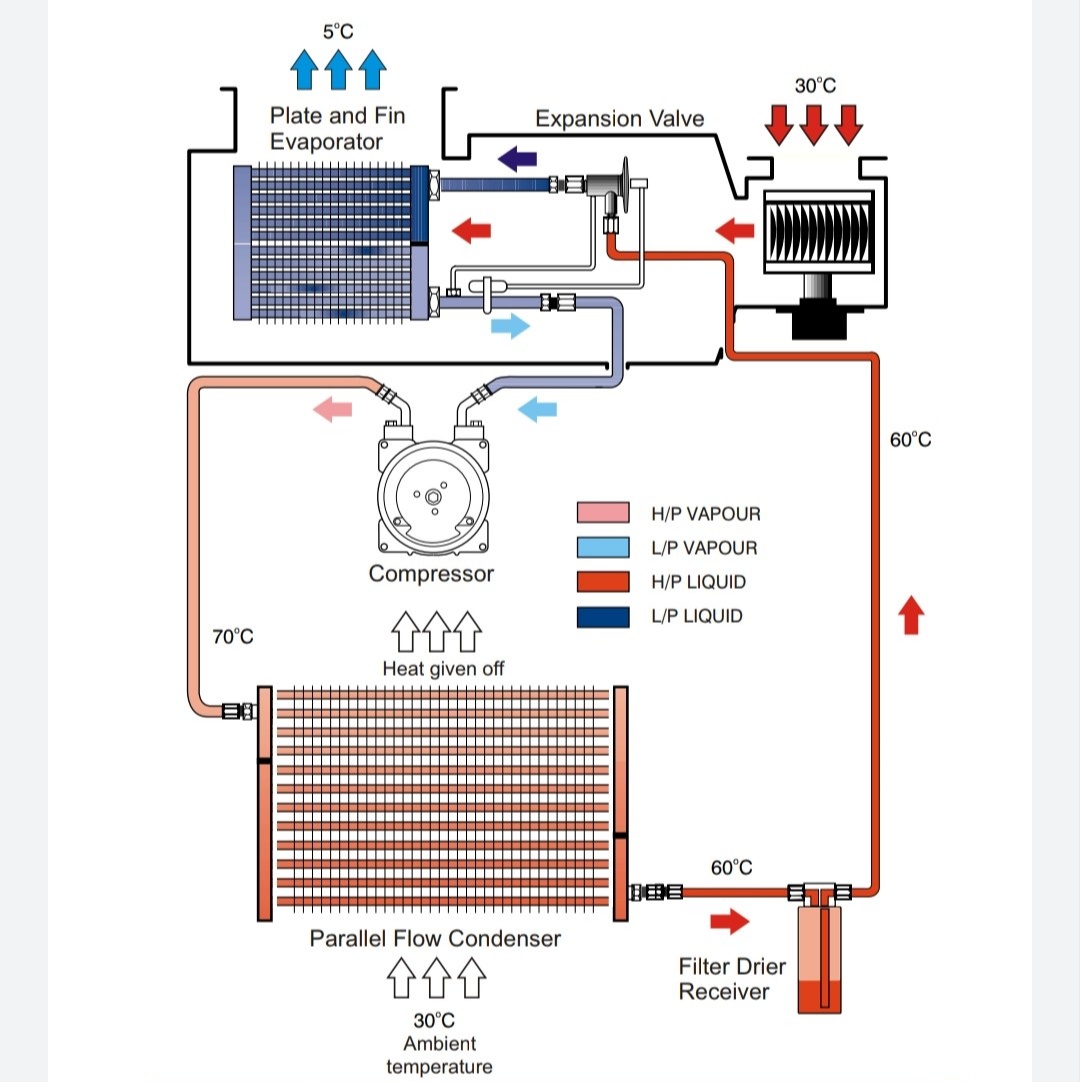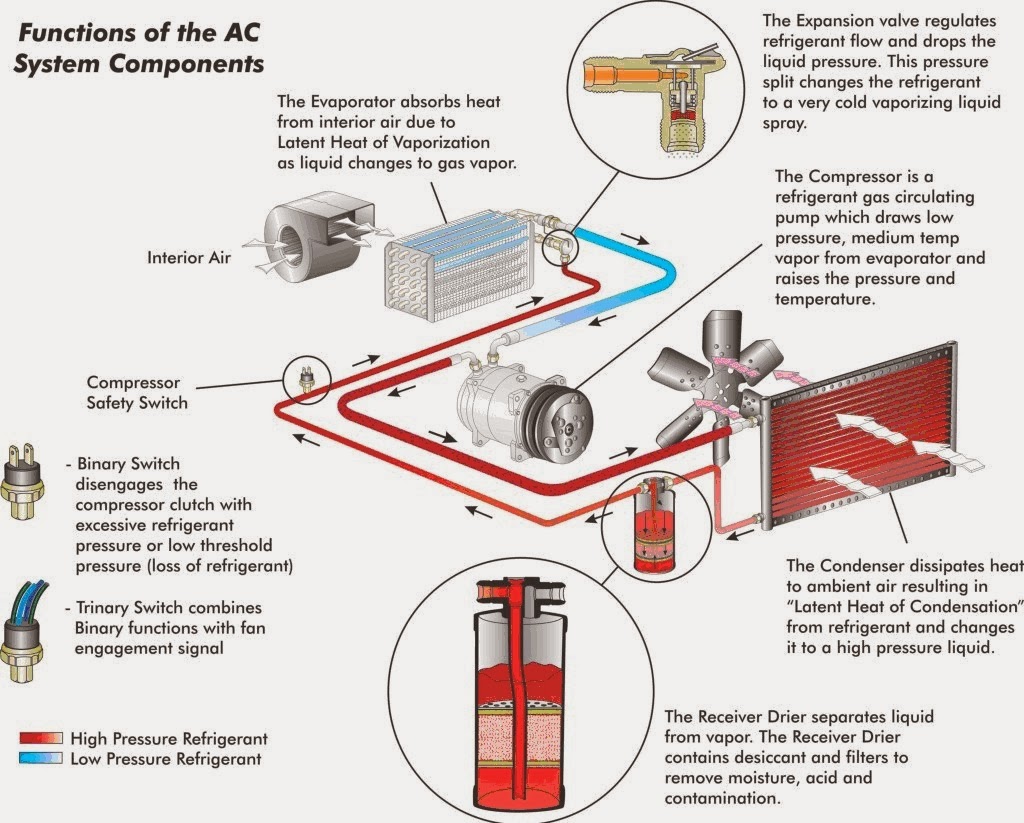Decoding Your Car's Cool: A Deep Dive into AC Systems
Ever hopped into a sweltering car on a scorching summer day and felt that instant wave of relief as the AC kicks in? That blissful chill is the product of a complex system working tirelessly behind the scenes. This isn't just about comfort; a functioning auto AC system is crucial for safe driving, preventing heatstroke and ensuring clear visibility by dehumidifying the cabin air. Let's delve into the fascinating mechanics of these automotive climate control marvels.
Understanding your car's air conditioning system goes beyond simply enjoying cool air. It involves grasping the roles of the various automotive AC components, from the compressor that pressurizes the refrigerant to the evaporator that absorbs heat. This knowledge empowers you to make informed decisions about maintenance and repairs, ultimately extending the lifespan of your system and saving you money in the long run.
The history of car AC systems traces back to the early 20th century, with initial attempts focusing on rudimentary cooling methods. The modern automotive air conditioning system, as we know it, began to take shape in the 1930s, evolving significantly over the decades. Packard introduced the first factory-installed car AC unit in 1939, marking a pivotal moment in automotive climate control. Today's systems are far more efficient and environmentally friendly, utilizing advanced refrigerants and sophisticated control mechanisms.
A key aspect of understanding car AC system workings is knowing the individual components and their interactions. The compressor, the heart of the system, pressurizes and circulates the refrigerant. The condenser, located at the front of the vehicle, releases heat absorbed by the refrigerant. The evaporator, often behind the dashboard, absorbs heat from the cabin air. The expansion valve regulates refrigerant flow, and the receiver/dryer removes moisture from the system. These components, working in harmony, deliver the refreshing cool air we rely on.
Common issues that plague car air conditioning systems include refrigerant leaks, compressor failures, and electrical problems. Regular maintenance, such as checking refrigerant levels and ensuring proper airflow, can prevent many of these problems. Recognizing the signs of a malfunctioning system, like weak airflow or unusual noises, is crucial for addressing issues early on and preventing more extensive damage.
Three key benefits of a well-functioning car AC system are enhanced comfort, improved safety, and better air quality. Comfort is obvious, especially in extreme temperatures. Safety is enhanced through increased driver alertness and the prevention of heat-related fatigue. Improved air quality comes from the system's ability to filter out pollutants and dehumidify the air, reducing allergens and preventing mold growth.
Ensuring optimal performance of your car's AC involves regular checks and preventative maintenance. Inspecting the drive belt for wear and tear, checking for leaks, and periodically recharging the refrigerant are crucial steps. Regular servicing by a qualified technician can identify potential problems before they escalate.
Advantages and Disadvantages of Modern Car AC Systems
| Advantages | Disadvantages |
|---|---|
| Improved comfort and reduced driver fatigue | Can reduce fuel efficiency |
| Enhanced safety by preventing heatstroke | Requires regular maintenance and can be expensive to repair |
| Better air quality through filtration and dehumidification | Contributes to greenhouse gas emissions (depending on the refrigerant) |
Frequently Asked Questions:
1. How often should I recharge my car's AC? Typically, every 2-3 years, depending on usage and system condition.
2. What are signs of a refrigerant leak? Weak airflow, warm air blowing, and hissing sounds.
3. Why is my car AC blowing hot air? Potential causes include low refrigerant, a faulty compressor, or electrical issues.
4. How can I improve my car AC's efficiency? Ensure proper airflow by keeping vents clear and using the recirculation setting when appropriate.
5. What is the role of the expansion valve? It regulates refrigerant flow, controlling the cooling process.
6. How does the condenser work? It releases heat absorbed by the refrigerant, converting it from a high-pressure gas to a high-pressure liquid.
7. What is the purpose of the receiver/dryer? It removes moisture and impurities from the refrigerant, protecting the system components.
8. How much does a car AC repair typically cost? Costs vary significantly depending on the issue, ranging from minor repairs to major component replacements.
Tips and Tricks: Park in the shade whenever possible to reduce the initial heat load on the system. Use the recirculation setting when initially cooling the car to maximize efficiency. Regularly clean the cabin air filter to improve air quality and airflow.
In conclusion, the car AC system, comprising interconnected components working in harmony, is more than a simple luxury—it's a crucial system for comfort, safety, and overall well-being. Understanding its workings, performing regular maintenance, and addressing issues promptly ensure optimal performance and extend its lifespan. From the compressor's rhythmic hum to the cool air flowing through the vents, the automotive air conditioning system is a testament to engineering ingenuity. By appreciating the complexities of this system and taking proactive steps to maintain it, you can enjoy countless miles of comfortable and safe driving, no matter the temperature outside. Take the time to familiarize yourself with your car’s specific system and consult with a qualified technician for any maintenance or repair needs. A little care goes a long way in ensuring that your car's AC system keeps you cool and comfortable for years to come.
Finding solace in words poems in memory of dad
Strike a pose mastering photogenic poses for women
Captivating audi rs3 images a comprehensive guide














